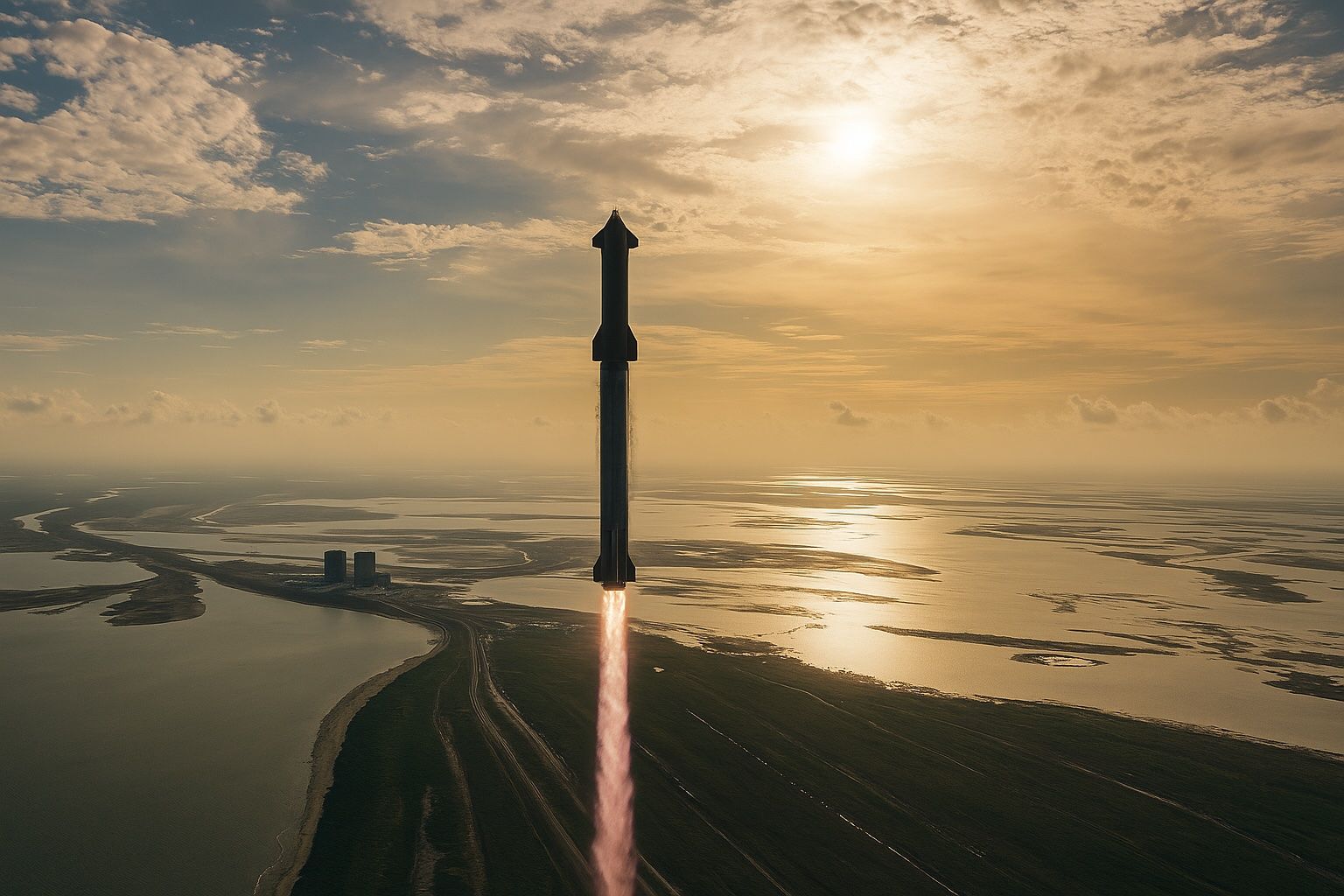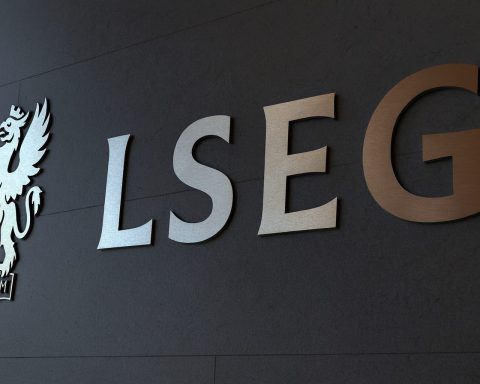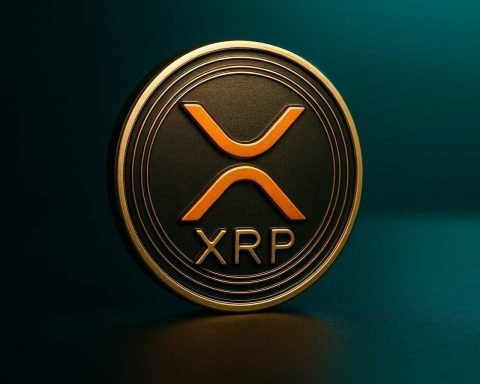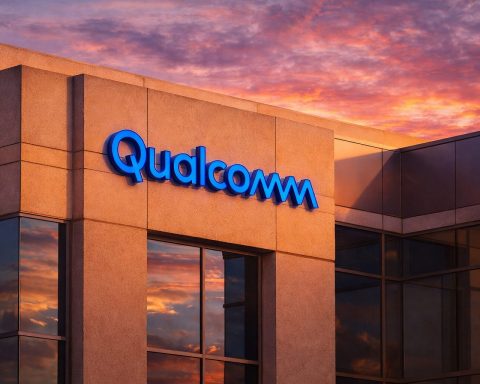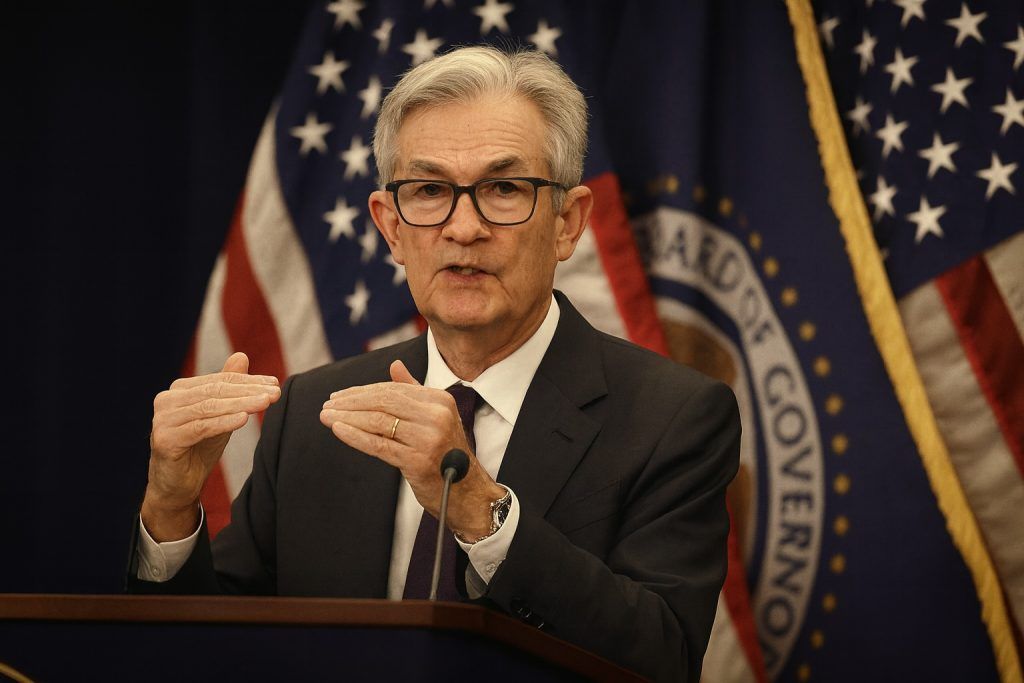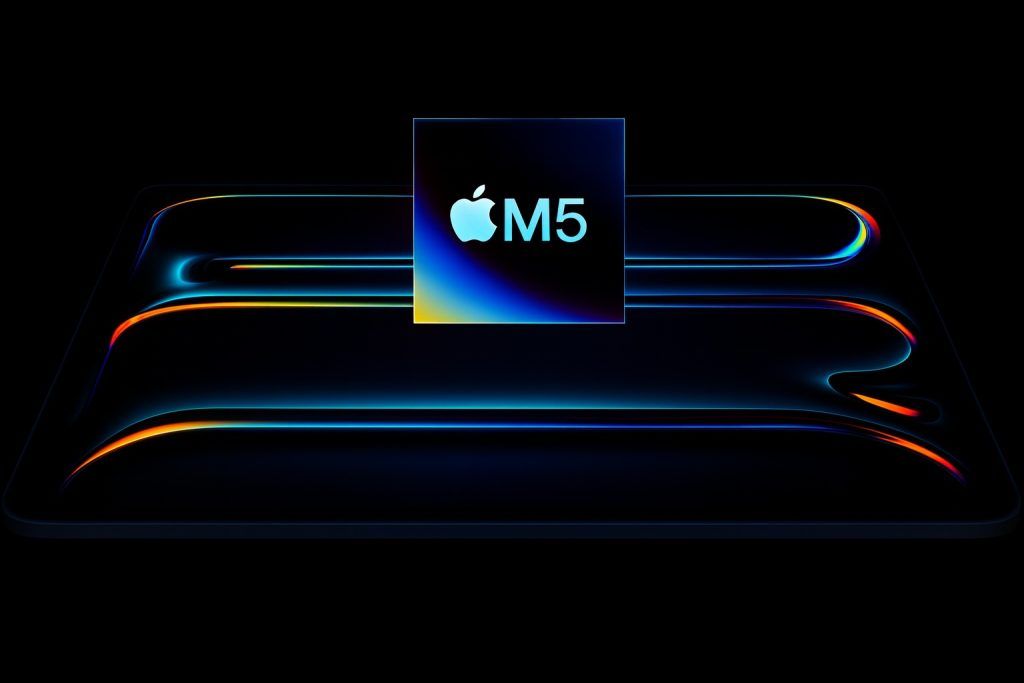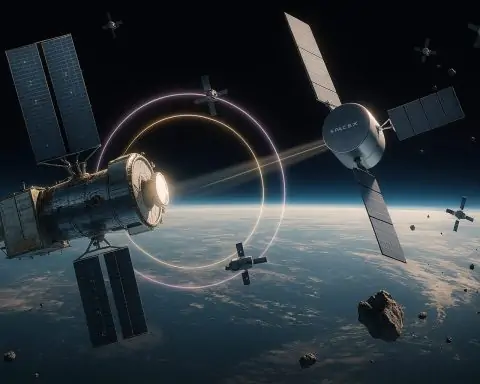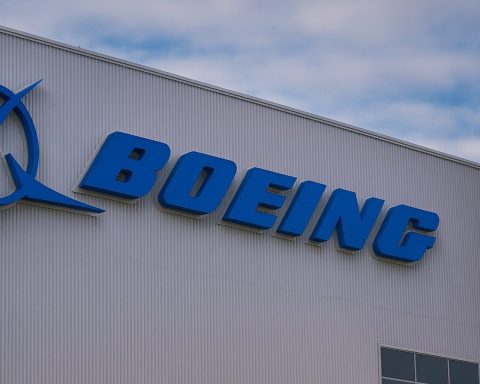- Mission Success: On Oct 13, 2025 SpaceX’s 400‑foot Starship rocket lifted off from Starbase, Texas. In a ~1‑hour suborbital flight it deployed eight dummy Starlink satellites and safely recovered its massive Super Heavy booster (soft splashdown in Gulf of Mexico) and upper stage (splashdown near Australia) [1] [2].
- Rocket Power: Starship is the largest rocket ever built. Fully stacked it stands ~121 m (400 ft) tall with 33 Raptor engines, producing ~16 million pounds of thrust – over twice that of the Saturn V Moon rocket [3].
- Last of V2, Next is V3: This was the final test flight of the Block 2 (Version 2) design. SpaceX now retires this version and builds Version 3 with orbital-refueling hardware for crewed lunar/Mars missions [4] [5]. Elon Musk even hinted that Starship V3 “might be capable of reaching Mars” [6]. Musk says next up is using Starbase’s “chopstick” tower arms to catch the Ship in spring 2026 [7].
- High Praise: NASA and SpaceX leaders hailed the flawless launch. Acting NASA Administrator Sean Duffy called it “another major step toward landing Americans on the Moon’s south pole” [8]. SpaceX President Gwynne Shotwell said the new Starship is “the vehicle that could take humans to the Moon and Mars” [9]. Engineer Jake Berkowitz congratulated the team on an “incredible” outcome [10], and CEO Elon Musk tweeted “Great work by the @SpaceX team” after splashdown [11].
- Stocks & Forecast: Space-related stocks jumped on the news. Rocket Lab, AST SpaceMobile, Intuitive Machines, Planet Labs and Redwire each climbed roughly 4–6% on launch day [12] [13] – extending a 125% rally so far in 2025 for this group. Analysts credit SpaceX’s “reliability and pace” for lifting confidence across the sector [14]. SpaceX itself is valued at about $400 billion privately [15]. Acclaimed investor Ron Baron even predicts SpaceX could reach a $500 billion valuation by 2030 [16]. With SpaceX targeting $15+ billion revenue in 2025 (thanks to record launches and Starlink subscriptions) [17], many experts see enormous future growth – though no IPO is planned in the near term.
Historic Starship Flight 11 Mission
On Oct 13 SpaceX executed the 11th test flight of its fully-reusable Starship rocket from its Starbase launch facility. The 400‑ft tall rocket roared to life under 33 Raptor engines, lifting its upper-stage (Ship 38) above the pad [18]. Two and a half minutes after liftoff the Super Heavy booster (B15) separated and began a carefully controlled descent. SpaceX ran a sophisticated landing burn (firing 13 engines then throttling to 5) and the booster made a soft splashdown in the Gulf of Mexico about 8½ minutes after launch [19]. This marked SpaceX’s third successful Super Heavy recovery and only the second reuse of the booster (it previously flew on Flight 8) [20]. The orbiter stage (Ship 38) continued into space, deployed its payload, then returned. About 20 minutes into the flight Ship 38 opened its bay and released eight flat panels simulating Starlink satellites [21]. It then reignited one Raptor for a de-orbit burn – proving it can relight in space for future missions. During reentry the Ship’s heat shield was tested (SpaceX had purposely removed tiles over vulnerable areas) and the vehicle performed a banking turn to orient itself. Approximately 66½ minutes after launch, Ship 38 hit the ocean off Western Australia right on target [22]. SpaceX’s live webcast erupted in cheers; on-camera announcer Dan Huot shouted “Let ’em hear it, Starbase – what a day!”, and propulsion engineer Jake Berkowitz later tweeted his congratulations.
These achievements completed all mission goals. The flight duplicated the profile of Starship 10 (Aug. 26, 2025) but added new learning: first-ever intentional payload deployment from Starship and intentional Raptor relight in space [23]. Both stages survived reentry intact. Starship’s success also proved the heat shield is improving: despite missing tiles, Ship 38 survived fiery descent [24]. Taken together, Flight 11 demonstrated the core “secret sauce” of SpaceX’s system: a fully reusable, stainless-steel, two-stage rocket designed for rapid turnaround [25]. Both stages are engineered to be caught by the launch tower’s robotic “chopstick” arms for fast inspections – eventually enabling multiple daily flights from one pad [26]. (To date SpaceX has caught the Super Heavy three times; catching the upper Starship will be next.)
Next Steps: Lunar Ambitions and Tower Catch
Flight 11 closes the book on Version 2 of Starship. SpaceX has already begun building the next prototype. Engineers are adding orbital-refueling hardware (docking adapters and fuel-transfer systems) to support crewed missions [27]. Musk confirmed on X that as soon as this year (tentatively spring 2026) SpaceX will attempt the long‑awaited “tower catch” for the Starship upper stage: using the pad’s giant pivoting arms to snatch the returning ship instead of landing it at sea [28]. Achieving routine tower catches for both Super Heavy and Starship is key to Musk’s vision of airline-like launch cadence.
All this ties directly into NASA’s deep-space plans. Starship has been selected as NASA’s lunar lander for the Artemis program, which aims to return humans to the Moon. In fact, NASA has awarded SpaceX a multi-billion dollar contract (roughly $3 billion) to land Artemis 3 astronauts near the Moon’s south pole in 2027 [29]. Acting NASA Administrator Sean Duffy made the connection clear, calling Flight 11 “another major step toward landing Americans on the Moon’s south pole” [30]. SpaceX executives emphasize that the new Starship will also enable Mars missions: Gwynne Shotwell said the future Starship “is really the vehicle that could take humans to the Moon and Mars” [31]. Musk himself founded SpaceX to “help our species set up shop on the Red Planet,” and he’s pushing Starship larger – a planned Version 4 (about 142 m tall with 42 engines) is in the works for the late 2020s [32]. For now, SpaceX is upgrading Starbase: Pad A will be rebuilt for V3 (new launch mount, flame trench and reinforced tower), and a second launch pad (Pad 2) is almost ready to boost launch cadence.
Space Stocks Rally on Starship Success
Investors wasted no time reacting to the Starship news. On Monday, as markets opened, major space-tech stocks jumped. Rocket Lab (RKLB), AST SpaceMobile (ASTS), Intuitive Machines (LUNR), Planet Labs (PL) and Redwire (RDW) all climbed roughly 4–6% on the day [33] [34]. This gain continued an extraordinary rally: these five stocks are up about 125% on average for 2025 as a group [35] [36]. By comparison, the S&P 500 rose ~1.5%. Analysts say SpaceX’s string of successes has created a “halo effect” that lifts the whole industry. One sector analyst noted that SpaceX’s “reliability and pace have lifted confidence across the ecosystem” [37]. Nearly 80% of Wall Street analysts rate those space-tech firms a “Buy,” vs. ~55% average for the market [38].
Notably, the launch beat Wall Street’s expectations. Traders had actually been betting on Flight 11 in advance: TipRanks reported that space stocks surged ahead of Oct 13 in anticipation of the test [39]. But the smooth, 11th-hour success drove a fresh wave of optimism. As one financial outlet put it, the “mega Starship launch sends space stocks soaring” [40]. Mike Callahan, a space industry analyst, observed to Investors Daily that successful Starship flights validate the commercial space model and reduce perceived risk for satellite and launch businesses.
Longer-term forecasts in the sector now look bullish. Wall Street firm Wedbush just raised its target price on Planet Labs, calling it “outperform” as Earth-imaging demand grows [41]. However, some analysts caution valuations are frothy – for instance AST SpaceMobile still lacks revenue, so its stock trades at thousands of times sales [42]. Overall though, the Starship outcome is widely seen as positive: a successful super-heavy reusable rocket should lower launch costs, spur new satellite ventures, and even enable new markets (from lunar mining to Mars tourism).
SpaceX’s $400B Moonshot: Valuation & Outlook
SpaceX’s private valuation is itself astronomical. The company is not public, but recent funding rounds have pegged its value near $400 billion [43] [44] – making it one of the world’s most valuable startups. That figure reflects Starlink’s rapid growth (over 8,500 internet satellites now in orbit [45]) and SpaceX’s launch dominance (Falcon 9 alone has flown 125+ missions in 2025 [46]). As one investor report notes, SpaceX hit about $15+ billion revenue in 2025 (thanks to ~170 missions and booming Starlink subscriptions) [47]. All this underpins lofty forecasts: veteran billionaire investor Ron Baron (a longtime SpaceX backer) told Reuters he thinks SpaceX “could be worth $500 B by 2030” – calling its growth potential “otherworldly” [48].
Retail investors can’t buy SpaceX stock directly, but funds like ARK and Fidelity hold it in trust. These secondary vehicles are surging on the news too. Meanwhile, some analysts expect SpaceX will eventually spin off or IPO Starlink (its satellite internet arm) in 2025–26 [49]. Should SpaceX or Starlink go public, today’s massive test successes would likely be cited as a catalyst for future growth.
Bottom Line: SpaceX’s 11th Starship flight was a clear win – technically and symbolically. It nailed every objective and validated SpaceX’s approach. The buzz around this milestone has rippled through government space programs and Wall Street alike: NASA’s Artemis teams breathe easier with Starship proving its mettle, and space-related stocks have climbed as investors price in the win. As one space blogger put it, Starship’s triumphant test “…was incredible!” and it moves humanity a step closer to the Moon and Mars [50] [51].
Sources: NASA and SpaceX commentary and mission details [52] [53]; news reports from Reuters, Space.com, Teslarati, and media partners [54] [55]; financial data on space-sector stocks [56] [57]; SpaceX valuation and analyst forecasts [58] [59].
References
1. ts2.tech, 2. www.teslarati.com, 3. ts2.tech, 4. ts2.tech, 5. www.teslarati.com, 6. www.teslarati.com, 7. www.teslarati.com, 8. ts2.tech, 9. ts2.tech, 10. ts2.tech, 11. ts2.tech, 12. watcher.guru, 13. www.edgen.tech, 14. www.edgen.tech, 15. www.tipranks.com, 16. ts2.tech, 17. ts2.tech, 18. ts2.tech, 19. ts2.tech, 20. ts2.tech, 21. ts2.tech, 22. ts2.tech, 23. ts2.tech, 24. ts2.tech, 25. ts2.tech, 26. ts2.tech, 27. ts2.tech, 28. www.teslarati.com, 29. ts2.tech, 30. ts2.tech, 31. ts2.tech, 32. www.space.com, 33. watcher.guru, 34. www.edgen.tech, 35. watcher.guru, 36. www.edgen.tech, 37. www.edgen.tech, 38. www.edgen.tech, 39. www.tipranks.com, 40. watcher.guru, 41. www.edgen.tech, 42. www.edgen.tech, 43. www.tipranks.com, 44. ts2.tech, 45. ts2.tech, 46. www.tipranks.com, 47. ts2.tech, 48. ts2.tech, 49. ts2.tech, 50. ts2.tech, 51. ts2.tech, 52. ts2.tech, 53. ts2.tech, 54. ts2.tech, 55. www.teslarati.com, 56. watcher.guru, 57. www.edgen.tech, 58. www.tipranks.com, 59. ts2.tech
